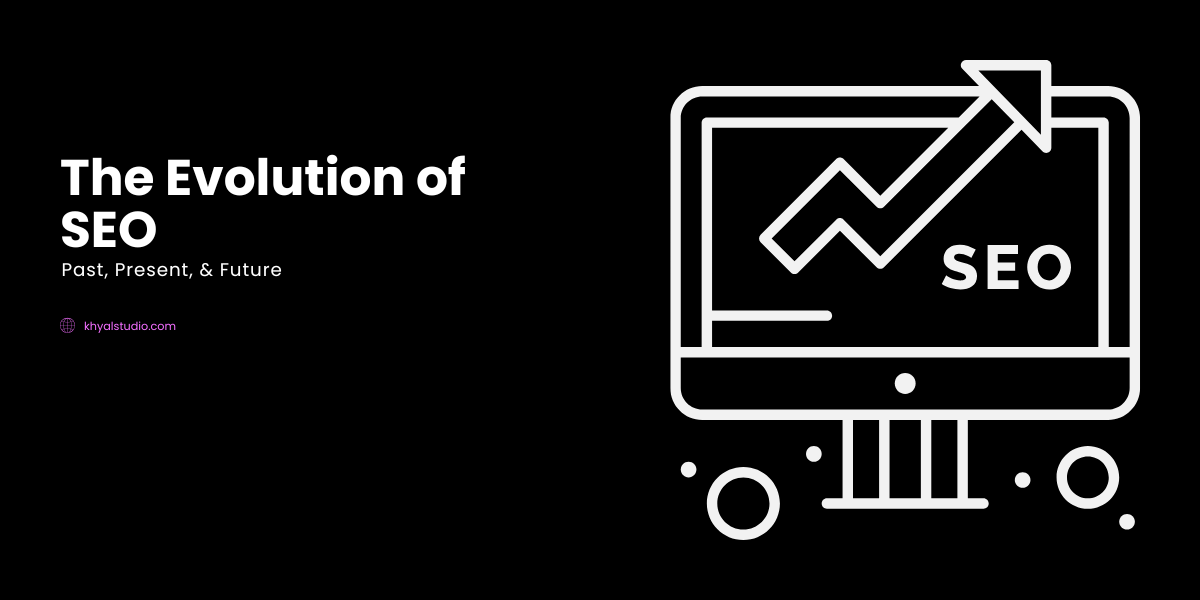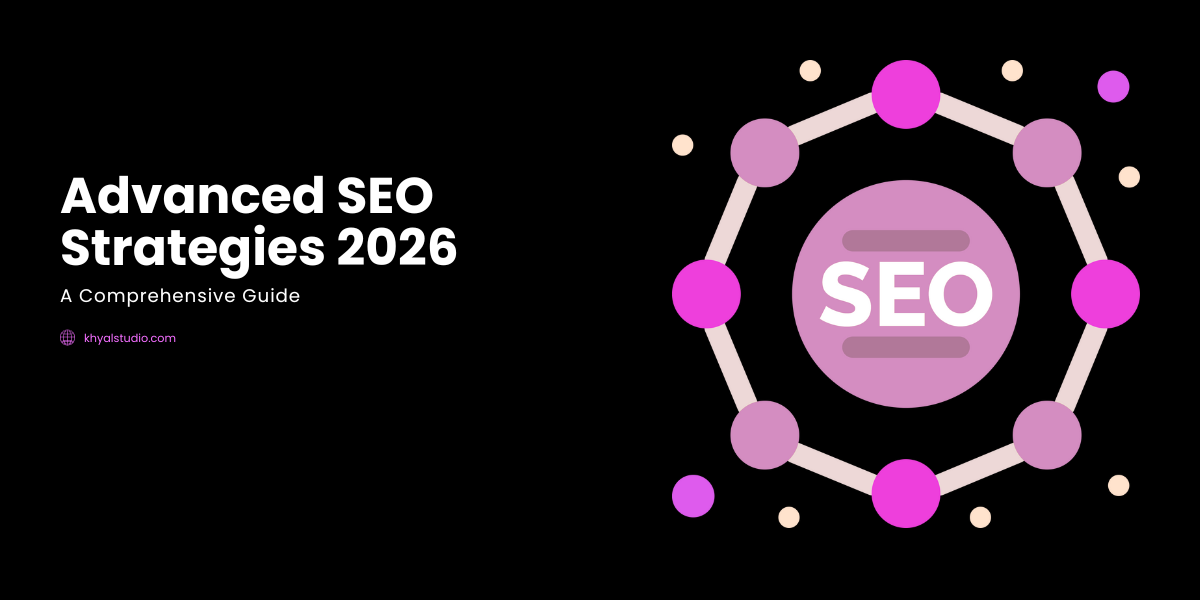Search Engine Optimization (SEO) has seen a remarkable transformation since its early days, moving from simple keyword tactics to a sophisticated, user-focused discipline essential for businesses worldwide.
This evolution reflects not only advancements in search engine algorithms but also shifts in consumer behavior, the rise of mobile and voice search, and now the significant influence of social media.
Here, we explore the journey of SEO, from its inception to the present, and look ahead to what the future holds.
The Past: The Beginnings of SEO
SEO originated in the early 1990s, coinciding with the rise of the first search engines like Yahoo, AltaVista, and Ask Jeeves. During these early years, SEO practices were rudimentary, relying heavily on keyword stuffing, cloaking, and using exact match meta tags to manipulate search engine rankings.
In 1998, Google launched and introduced its PageRank algorithm, marking a monumental shift in SEO. PageRank measured the importance of web pages based on the number and quality of backlinks, fundamentally changing SEO by emphasizing content relevance and quality rather than simple keyword manipulation.
This algorithm effectively reduced spammy practices and focused on delivering relevant, user-centered content. This shift began an era in SEO where website quality, credibility, and user experience became more significant factors.
Key Milestones in Early SEO:
- 2003: Google launched its “Florida Update,” targeting keyword stuffing and other manipulative tactics, setting the stage for ethical SEO practices.
- 2011: The “Panda Update” penalized low-quality content, focusing on relevance and depth, influencing content creation standards still relevant today.
- 2012: Google’s “Penguin Update” de-emphasized sites with unnatural link schemes, promoting organic link-building as a vital SEO strategy.
The Present: SEO in a User-Driven World
Today, SEO is an integrated, multi-faceted approach that prioritizes user experience, with search engines like Google evaluating numerous factors to determine rankings.
Modern SEO involves high-quality, valuable content, technical optimization, and engagement on social platforms, all aimed at providing a seamless user journey. Here are some critical elements that define SEO in today’s landscape:
1. Content Quality and Relevance
Google and other search engines favor content that is not only original but also informative, engaging, and aligned with user intent.
Creating well-researched, in-depth content has become paramount, with long-form content often performing better on search engine results pages (SERPs).
2. Mobile Optimization and Page Speed
With over 60% of searches now conducted on mobile devices, search engines have adapted their algorithms to prioritize mobile-friendly websites.
According to Statista, mobile devices accounted for approximately 58.43% of global website traffic as of 2023. Mobile optimization and fast-loading pages are crucial, as users tend to abandon sites that take more than three seconds to load.
3. Secure and Accessible Websites
Security is a core ranking factor today. Google prioritizes sites with HTTPS encryption, signaling to users that their data is safe.
Likewise, accessibility features like proper image alt tags and schema markup help search engines better understand and index site content.
4. User Experience and Core Web Vitals
Google’s introduction of Core Web Vitals emphasizes user-centric metrics such as loading speed (Largest Contentful Paint), interactivity (First Input Delay), and layout stability (Cumulative Layout Shift).
Websites that meet these criteria rank higher, providing users with a fast, stable, and interactive experience.
5. The Role of Artificial Intelligence
Google’s AI-driven algorithm, RankBrain, uses machine learning to interpret complex queries and prioritize content that aligns with user intent.
AI helps search engines “understand” language nuances and context, making conversational content more effective. This shift has transformed SEO from a keyword-centric practice to one that values content quality, relevance, and natural language.
The Future: SEO Expanding Beyond Search Engines
The future of SEO is set to evolve beyond traditional search engines, adapting to the changing preferences of younger audiences, especially Generation Z.
Social media platforms, particularly TikTok and Instagram, are becoming alternative “search engines” where users—often Gen Z—discover information, products, and services.
According to a 2024 report from the New York Post, 45% of Gen Z users now prefer using social media platforms over search engines for discovery purposes.
As social media platforms enhance their search functionalities, SEO strategies will increasingly need to adapt to these unique ecosystems.
1. Social Media Optimization (SMO): The New SEO Frontier
Social media optimization, once a niche practice, is now essential for brands aiming to connect with younger audiences. Social platforms offer unique discovery experiences that combine hashtags, influencer collaborations, and video content.
Optimizing for social search will require a new set of strategies, such as keyword-rich captions, hashtag research, and engaging video content.
2. Video Content Dominance
With the rise of short-form video on platforms like TikTok, video content is predicted to become a central pillar of SEO. Video currently accounts for over 82% of all internet traffic, according to a recent Cisco report.
Video SEO, focusing on engaging titles, keywords, and thumbnails, is becoming crucial as platforms continue to favor video-based results.
3. Voice Search and Conversational AI
Voice search usage is expected to increase with advancements in conversational AI. According to Juniper Research, voice commerce is projected to grow globally, with more users relying on voice-enabled devices for search.
Optimizing for voice requires a focus on natural, conversational language, making content more accessible to devices that handle spoken commands.
4. The Influence of Influencers and UGC
Younger users often rely on influencer recommendations and user-generated content (UGC) for decision-making. Collaborating with influencers and encouraging UGC can enhance brand visibility in social searches.
Platforms like Instagram and TikTok prioritize posts with high engagement, making influencer partnerships a strategic way to boost SEO on these platforms.
5. Integrating SEO with Multichannel Experiences
As search behavior diversifies, brands will need to create a seamless, multichannel approach to content, ensuring it is accessible and optimized across search engines and social platforms alike.
By harmonizing SEO with social media strategies, businesses can reach audiences wherever they prefer to search, whether it’s on Google, Instagram, or TikTok.
Final Thoughts: Preparing for SEO’s Expanding Future
The evolution of SEO reflects a continuous adaptation to new technologies, platforms, and user behaviors. As SEO expands beyond traditional search engines to social media platforms, brands need to stay agile, adjusting their strategies to resonate with shifting audience preferences.
Embracing SEO best practices while preparing for a future where social media search is prominent will allow brands to remain competitive and visible.
For businesses looking to future-proof their SEO strategies, it’s essential to focus on creating high-quality, multi-platform content that aligns with user needs and search behaviors.
The future of SEO will require a seamless integration across search engines, social media, and even voice-activated devices to capture the attention of both traditional users and the growing Gen Z audience.
Learn how Khyal Studio can help future-proof your SEO strategy by integrating social media optimization and search engine best practices.





